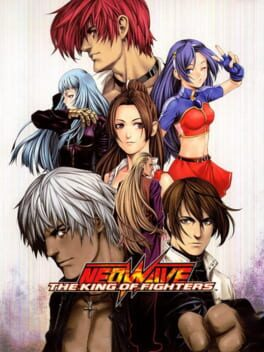Trivia Browser
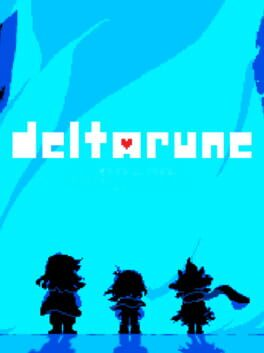
▲
1
▼
 In Chapter 2, if the player activates the Warp Door in Queen's mansion and uses it to revisit Cyber City, they will find one of the paths blocked off by an oversized toilet sprite. According to a tweet posted by Toby Fox during Chapter 2's development, the sprite was created at his request by the game's primary graphic designer Temmie Chang, only to end up absurdly large due to a miscommunication.
In Chapter 2, if the player activates the Warp Door in Queen's mansion and uses it to revisit Cyber City, they will find one of the paths blocked off by an oversized toilet sprite. According to a tweet posted by Toby Fox during Chapter 2's development, the sprite was created at his request by the game's primary graphic designer Temmie Chang, only to end up absurdly large due to a miscommunication.Furthermore, interacting with the toilet produces the message "(For some strange reason, a giant toilet-shaped toilet is blocking the way.)" This is a reference to the Iron Pencil statues in EarthBound, which produce the near-identical message "(For some weird reason, a pencil-shaped iron statue is blocking the path.)" when checked.

▲
1
▼
According to a 2001 developer interview published in V-Jump magazine, the game's character designer Tetsuya Nomura stated the main character's name, Tiida (Tidus in the international release), was the Okinawan word for "sun". After Final Fantasy VIII, the team wanted to give their next main character a brighter and more cheerful personality. Kazushige Nojima gave Tiida his name, and Nomura thought he had a "bright" motif for the character in mind considering his name's meaning.

▲
1
▼
According to a 1998 The Playstation magazine interview with the game's director Hideki Kamiya & writer Noboru Sugimura, they were asked about the chief of police character Brian Irons. Kamiya stated that he was originally going to be a normal police chief. His chubby exterior was still the same, but he would be seen properly wearing his uniform, talked like a normal officer, etc.
Sugimura credited himself as the one who made his deviant personality. Once they changed the police station building from a modern-day one to an old art museum, someone on the development team commented that it would be strange if there were medals just lying around in that place. Then Sugimura said "Well, we'll just have to make the police chief a weirdo then!", and Irons was what he came up with. He then created the character's hidden room, the idea that Chief Irons had been given bribes from Umbrella, and gave him "an insane grin on his face". Those who first saw the idea did not think it was very realistic, but Sugimura replied that "reality depends on persuasion and belief, so as long everything was consistent, it would appear real".
Kamiya stated that he was initially against turning Irons into a weirdo and protested it, but as the game's development progressed, the staff grew to like the idea and began coming up with "ridiculous details" to complement the personality shift. One example he cited are the hallway's torches leading to Irons' hidden room. The person who made it told him, "The Chief uses those to light a fire when he has his rituals!".
After confirming that Brian Irons' name appeared as a signature on the player select screen ID card in the first Resident Evil game, Kamiya revealed that wanted to use an "-ian" sound for both the first name and surname when coming up with the name, and decided that "Brian Irons" worked perfectly. He didn't think it would be anything more than just a lighthearted signature.
Sugimura commented that he didn't know that, and that when Resident Evil 2's development started the police chief was actually named Gordon until someone pointed out he was already given the name Brian Irons and stuck with it to connect it to the first game.
Sugimura credited himself as the one who made his deviant personality. Once they changed the police station building from a modern-day one to an old art museum, someone on the development team commented that it would be strange if there were medals just lying around in that place. Then Sugimura said "Well, we'll just have to make the police chief a weirdo then!", and Irons was what he came up with. He then created the character's hidden room, the idea that Chief Irons had been given bribes from Umbrella, and gave him "an insane grin on his face". Those who first saw the idea did not think it was very realistic, but Sugimura replied that "reality depends on persuasion and belief, so as long everything was consistent, it would appear real".
Kamiya stated that he was initially against turning Irons into a weirdo and protested it, but as the game's development progressed, the staff grew to like the idea and began coming up with "ridiculous details" to complement the personality shift. One example he cited are the hallway's torches leading to Irons' hidden room. The person who made it told him, "The Chief uses those to light a fire when he has his rituals!".
After confirming that Brian Irons' name appeared as a signature on the player select screen ID card in the first Resident Evil game, Kamiya revealed that wanted to use an "-ian" sound for both the first name and surname when coming up with the name, and decided that "Brian Irons" worked perfectly. He didn't think it would be anything more than just a lighthearted signature.
Sugimura commented that he didn't know that, and that when Resident Evil 2's development started the police chief was actually named Gordon until someone pointed out he was already given the name Brian Irons and stuck with it to connect it to the first game.
Franchise: Kingdom Hearts
▲
1
▼
Sora's Parents are only mentioned or appear very few times in the entire series despite what their son goes through. The first is in the cutscene "The Keyblade" during the first game where the storm of darkness hits Destiny Islands. Sora's mom can be heard shouting to her son to come down for dinner to no avail. Moments later, Riku tells Sora, when standing under the dark portal and tempting Sora to come with him, that they won't see their parents again if they willingly go. Another time is when Sora talks to Donald and Goofy about Namine's disappearance in Castle Oblivion in Kingdom Hearts: Chain of Memories and, influenced by a false memory, says that he thinks his parents knew about her disappearance. The last time is in Kingdom Hearts: Birth By Sleep Spoiler:when Terra visits Destiny Islands and talks to a very young Riku who mentions that his friend's (Sora's) dad took them out on his boat.
Franchise: Kingdom Hearts
▲
1
▼
The games' real-time action platforming aspect (in contrast to the turn-based combat of previous Square RPGs) came from a desire by series creator Tetsuya Nomura and others at Square of wanting to make a game extremely similar to and as thrilling as Super Mario 64 after they played that game and were enamored by it. However in order to make the concept stand on its own two feet, they decided to use Disney properties (which made Nomura in particular even more excited and obsessed with the project) as they believed Disney was the only thing that could compete with Nintendo and Mario.

▲
1
▼
When coming up with a name for the game and eventual series, the developers were attracted to the name "Kingdom" because, to Nomura and his team, the game's iconic premise of the different Disney movies' stories being rendered as "Worlds" for the player to visit reminded them of Disney's theme parks, such as the Magic Kingdom and Disney's Animal Kingdom, which are segmented into different "lands" or areas for visitors to explore. However, Square had difficulty in securing the name "Kingdom" alone, so they decided to add the word "Hearts" to it because such entities played an important role in the lore of the game and series.
Franchise: Kingdom Hearts
▲
1
▼
As revealed in by an interview with a head of Disney Interactive Studios in 2017, the original characters of Kingdom Hearts, such as Sora, although created by Square Enix, are wholly and entirely owned by Disney and the company can do as they please with them.

▲
1
▼
Disney heavily restricted the use of Mickey Mouse in the game especially as the central character like Square initially wanted. This was because Disney was nervous about the success of the game and did not want its possible failure leaving a black mark on the company and its mascot. Tetsuya Nomura stated that these contractual restrictions went so far as to have Disney allow Mickey to only make a minor cameo appearance (such as "in the background of a crowd" as Nomura put it). Spoiler:Nomura and his team got around this by having Mickey have an extremely important but brief role at the end of the game in the form of Mickey helping Sora close the Door to Darkness so no more Darkness gets out of it, separating the two. King Mickey even appears mostly in silhouette in this scene. When the first Kingdom Hearts became a humongous success for both Disney and Square, the former allowed the game developers to feature their mascot in a much more prominent role in the franchise from then onward.

▲
1
▼
If the player builds the duck version of the Thrash Machine in Chapter 1 and imports the resultant save file to Chapter 2, its attacks during the Spoiler:Rouxls Kaard fight become extremely easy to avoid; Spoiler:Rouxls and Ralsei will also have unique dialogue surrounding the machine's design.
Later, when the Thrash Machine is incorporated into the mech used to fight Spoiler:Giga Queen, the duck version replaces the standard punch sound effects with squeaking noises and features "DuckMode" as its offensive ACT, which reduces the move's strength in exchange for slightly draining additional health from Spoiler:Giga Queen between turns.
Later, when the Thrash Machine is incorporated into the mech used to fight Spoiler:Giga Queen, the duck version replaces the standard punch sound effects with squeaking noises and features "DuckMode" as its offensive ACT, which reduces the move's strength in exchange for slightly draining additional health from Spoiler:Giga Queen between turns.
Franchise: Double Dragon
▲
1
▼
The series struggles to maintain a consistent art style after the first game. Though fans found this inconsistency is part of their charm, the series' creator, Yoshihisa Kishimoto, had always lamented that to be the case:
"Many different people worked on Double Dragon's graphics over the years, and Technos often outsourced the game design to external companies, so there was no consistency to the branding or the quality," he says. "I personally find it unfortunate, but that's the way Technos handled its titles."
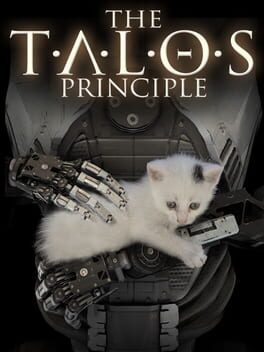
▲
1
▼
 In Area B: Room 5, it is possible to reach the top of the building just above the teleporter that brought you there in the first place. To do this, you must go to the puzzle "Behind the Iron Curtain" and while completing it, maneuver your way so that a box and fan used in the puzzle are blown out of the puzzle's walls into the Room's map. Afterwards, take the box to a nearby hole that leads to the river until you find a connector for the fan and place it there. After going back to retrieve and place the fan, jumping into it will blast you through the air across the map and onto the top of the building, which will then suddenly teleport you to a dark cave. Walking further into the cave will reveal a glass pyramid prism with a light shining through to create a rainbow. This is a recreation of the cover art of the band Pink Floyd's 1973 album "The Dark Side of the Moon", and interacting with the prism will play a short cover of the instrumental opening to the first part of the song "Shine On You Crazy Diamond" from Pink Floyd's 1975 album "Wish You Were Here".
In Area B: Room 5, it is possible to reach the top of the building just above the teleporter that brought you there in the first place. To do this, you must go to the puzzle "Behind the Iron Curtain" and while completing it, maneuver your way so that a box and fan used in the puzzle are blown out of the puzzle's walls into the Room's map. Afterwards, take the box to a nearby hole that leads to the river until you find a connector for the fan and place it there. After going back to retrieve and place the fan, jumping into it will blast you through the air across the map and onto the top of the building, which will then suddenly teleport you to a dark cave. Walking further into the cave will reveal a glass pyramid prism with a light shining through to create a rainbow. This is a recreation of the cover art of the band Pink Floyd's 1973 album "The Dark Side of the Moon", and interacting with the prism will play a short cover of the instrumental opening to the first part of the song "Shine On You Crazy Diamond" from Pink Floyd's 1975 album "Wish You Were Here".
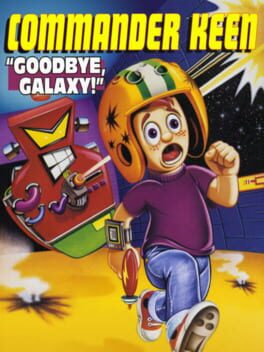
▲
2
▼
 One of the enemies in the "Secret of the Oracle" episode, Dopefish, was a "stupid little fish" created by the game's designer Tom Hall and described in-game as "the second-dumbest creature in the universe" (in reference to the dumbest creature in the universe, the Ravenous Bugblatter Beast of Traal from Douglas Adams' "The Hitchhiker's Guide to the Galaxy" franchise), and has since gone on to develop a cult following and become one of the biggest recurring in-jokes in the video game industry due to the sheer amount of games it has made appearances in (a large chunk of which having Tom Hall's involvement).
One of the enemies in the "Secret of the Oracle" episode, Dopefish, was a "stupid little fish" created by the game's designer Tom Hall and described in-game as "the second-dumbest creature in the universe" (in reference to the dumbest creature in the universe, the Ravenous Bugblatter Beast of Traal from Douglas Adams' "The Hitchhiker's Guide to the Galaxy" franchise), and has since gone on to develop a cult following and become one of the biggest recurring in-jokes in the video game industry due to the sheer amount of games it has made appearances in (a large chunk of which having Tom Hall's involvement).As of October 2021, Dopefish has made known appearances in Wacky Wheels, Rise of the Triad, Duke Nukem 3D, Shadow Warrior, Quake, Quake II, Quake III Arena, Jazz Jackrabbit 2, SiN, Descent 3, Battlezone, Kingpin, Daikatana, Anachonox, Max Payne, Hyperspace Delivery Boy, Commander Keen (2001), Return to Castle Wolfenstein, Eternal Daughter, Hitman 2: Silent Assassin, Red Faction, Congo Cube, The Frozen Throne expansion to Warcraft III: Reign of Chaos, SiN Episodes: Emergence, Chili Con Carnage, TAGAP: The Apocalyptic Game About Penguins, Fortress Forever, OFF, Dystopia, Deus Ex: Human Revolution, Pettington Park, Rocketbirds: Hardboiled Chicken, Warsow, Bombshell, Doom (2016), Wolfenstein II: The New Colossus, Ion Fury, and Doom Eternal.
Beyond video games, Dopefish notably made a cameo appearance in the animated series "Tiny Toon Adventures" in the 1992 episode "Toon TV" during the song "Toon In, Toon Out", which aired less than a year after the release of Commander Keen in "Goodbye, Galaxy!". Dopefish also cameoed in "Lakewood Plaza Turbo", the pilot episode to the 2017 animated series "OK K.O.! Let's Be Heroes".
The Official Dopefish Home Page:
http://dopefish.com/fishinfo.html
Tiny Toon Adventures - "Toon In, Toon Out":
https://www.youtube.com/watch?v=kKWD3JaCSO8#t=126
OK K.O.! Let's Be Heroes - Lakewood Plaza Turbo:
https://www.youtube.com/watch?v=SM6W8Oj-L3c#t=98
http://dopefish.com/fishinfo.html
Tiny Toon Adventures - "Toon In, Toon Out":
https://www.youtube.com/watch?v=kKWD3JaCSO8#t=126
OK K.O.! Let's Be Heroes - Lakewood Plaza Turbo:
https://www.youtube.com/watch?v=SM6W8Oj-L3c#t=98
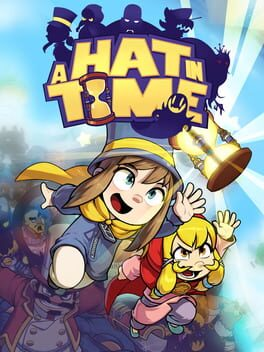
▲
1
▼
 In the Nyakuza Metro DLC, there is a hidden area that can be accessed in the Green Clean Station by jumping off of a moving subway train at the last second and then wall-jumping up to the top of a large, green, three-tiered LCD display above the station ledge. At the top, a cage with an egg can be found, but just near it is a Springboard that will send Hat Kid to a hidden, burning, grated area through a manhole. Upon interacting with the manhole, a message can be found on it that reads "Kiwami means extreme.". Suddenly, an eye-patched Metro Cat named Meowjima will ambush you by jumping out of the manhole and screaming:
In the Nyakuza Metro DLC, there is a hidden area that can be accessed in the Green Clean Station by jumping off of a moving subway train at the last second and then wall-jumping up to the top of a large, green, three-tiered LCD display above the station ledge. At the top, a cage with an egg can be found, but just near it is a Springboard that will send Hat Kid to a hidden, burning, grated area through a manhole. Upon interacting with the manhole, a message can be found on it that reads "Kiwami means extreme.". Suddenly, an eye-patched Metro Cat named Meowjima will ambush you by jumping out of the manhole and screaming:"HAT KID-CHAAAAAAN! You've grown soft, time to bring out your fighting spirit!"
This initiates a secret mini-boss battle. The message on the manhole is a reference to the tagline of the game Yakuza: Kiwami, and this character is a parody of Goro Majima based on his appearance in that game as well as a reference to one of its side quests "Majima Everywhere", where he ambushes Kazuma Kiryu through disguised encounters as a form of training. There is no reward for completing this boss battle, and upon interacting with the manhole again you will be sent back to the Springboard you used to enter it.

▲
1
▼
 Updated versions of the game were distributed online via the Satellaview service in Japan; these versions support standard controllers as well as the Super NES Mouse. The "Yuushou Naizou Ban" version of the game also adds the picture "Dreaming of the Moon" by Mizota Hiroko of Tokyo, the winner of a contest associated with an earlier updated version of the game titled "Mario Paint BS-Ban".
Updated versions of the game were distributed online via the Satellaview service in Japan; these versions support standard controllers as well as the Super NES Mouse. The "Yuushou Naizou Ban" version of the game also adds the picture "Dreaming of the Moon" by Mizota Hiroko of Tokyo, the winner of a contest associated with an earlier updated version of the game titled "Mario Paint BS-Ban".

▲
1
▼
 If your regular and animation canvases are sufficiently large and detailed that the game cannot compress them into the cartridge's 32 kilobytes of SRAM, the Save Robot will display a rarely seen "DATA OVER FLOW" error, complete with a unique animation of smoke puffing out of its "ears" with a looping explosion sound effect.
If your regular and animation canvases are sufficiently large and detailed that the game cannot compress them into the cartridge's 32 kilobytes of SRAM, the Save Robot will display a rarely seen "DATA OVER FLOW" error, complete with a unique animation of smoke puffing out of its "ears" with a looping explosion sound effect.

▲
1
▼
By plugging a controller into the second port on a SNES, two extra features can be accessed:
•Pressing A/B/Start at the same time will start the game without having to click on Mario.
•Pressing A/B/Select at the same time will (after a short delay) load and display the currently saved drawing, animation, and music. If nothing has been saved, the message "NO SAVE DATA" will be displayed instead, and you must reset the console to return to the title screen.
•Pressing A/B/Start at the same time will start the game without having to click on Mario.
•Pressing A/B/Select at the same time will (after a short delay) load and display the currently saved drawing, animation, and music. If nothing has been saved, the message "NO SAVE DATA" will be displayed instead, and you must reset the console to return to the title screen.

▲
1
▼
The original Japanese version of the game was partially inspired by the films by Hong Kong action star and martial artist, Bruce Lee. The creator combined elements from Lee's Enter the Dragon with that of his own life to create the game's concept.

▲
1
▼
Takuma's ability to combo off of his desperation move was originally a glitch:
"Takuma is able to combo off his Super Strike Gale, but originally this was a bug. We tried taking it out, but he was too weak without it: 'I don’t know… if Takuma doesn’t have this, he’s kind of… um…' So we re-added it again! Thanks to that decision though he became a pretty cheap character. So I kind of regret it now."
"Takuma is able to combo off his Super Strike Gale, but originally this was a bug. We tried taking it out, but he was too weak without it: 'I don’t know… if Takuma doesn’t have this, he’s kind of… um…' So we re-added it again! Thanks to that decision though he became a pretty cheap character. So I kind of regret it now."

